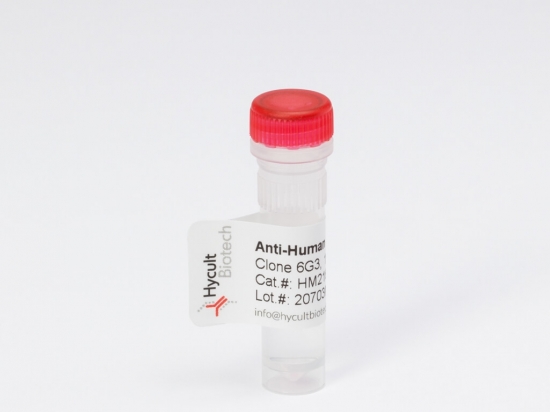Lipopolysaccharide Core, Monoclonal Antibody WN1 222-5
- Supplier: Hycult Biotech
Product Description
- The mouse monoclonal antibody clone WN1 222-5 recognizes the core region of lipopolysaccharide (LPS), whereas it lacks reactivity with free lipid A and Rd2 or smaller LPS. LPS is a constituent of the outer membrane of the cell wall of certain types of Gram-negative bacteria, such as E. coli, Salmonella, Shigella, Pseudomonas, Neisseria, Haemophilus, and some other lesser known pathogens. The endotoxins of Gram-negative bacteria are LPS molecules with three distinct domains referred to as lipid A, core oligosaccharide and O-polysaccharide. The lipid A and core oligosaccharide comprise the endotoxin core and are relatively conserved among different Gram-negative bacterial species. The O-polysaccharides show wide structural diversity and give rise to the O-specificity of different strain and species serotypes. Lipid A is the toxic moiety of endotoxin, and is covalently linked to core oligosaccharide in all LPS. Rough (R) bacteria lack the O-polysaccharide of their smooth (S) strain bacteria counterparts, and different rough mutant bacteria have been isolated expressing a range of incomplete core oligosaccharide structures ranging from complete core (Ra) to deep-rough (Re) mutants expressing only lipid A linked to inner-core KDO residues.
- During life, humans as well as other vertebrates, are often exposed to LPS, for instance by enterobacteria. While growing, enterobacteria releases small amounts of endotoxins. Predominant part of the endotoxins stay on the cell wall until the bacterium disintegrates. Endotoxins are heat stable, so even boiling the infected material for 30 minutes will not denature it. Watery diarrhea is caused by released LPS that interacts with the digestive track intestine. Cells and tissue can be destroyed by the LPS resulting in inflammation. Furthermore, LPS is a causal factor of NEC (necrotizing enterocolitis), a disorder found mostly in newborn infants. If LPS gains entry to the bloodstream, it can bind the host cells, such as macrophages. LPS responses are complicated and involve complexes of LPS-binding protein (LBP), soluble and/or membrane bound CD14 and Toll like receptor 4 ( TLR4). LBP is a serum protein that catalyzes LPS recognition by CD14. Recognition of LPS triggers a cascade of adverse systemic responses and organ failure (septic shock).
Product Options
| Product Number | Description | Package Size | List Price (CAD) | ||
|---|---|---|---|---|---|
| HYBHM601120UG | Lipopolysaccharide Core, mAb WN1 222-5, 20 µg | 20 µg |
CA$274.40
|
Add to Cart | |
| HYBHM6011100UG | Lipopolysaccharide Core, mAb WN1 222-5, 100 µg | 100 µg |
CA$926.00
|
Add to Cart | |
| HYBHM601110MG | Lipopolysaccharide Core, mAb WN1 222-5 | 10 mg |
CA$15,376.00
|
Add to Cart | |
| HYBHM60111MG | Lipopolysaccharide Core, mAb WN1 222-5 | 1 mg |
CA$3,076.00
|
Add to Cart | |
| HYBHM6011500UG | Lipopolysaccharide Core, mAb WN1 222-5 | 500 µg |
CA$2,158.00
|
Add to Cart | |
| HYBHM60115MG | Lipopolysaccharide Core, mAb WN1 222-5 | 5 mg |
CA$11,527.00
|
Add to Cart |
List Prices are displayed.
Please register or log-in to the site to view your organization’s prices, or please add the products to your cart and click the “Request a Quote” button to receive price and availability information (include quantities for each product and indicate either a one-time purchase or your annual usage.)



